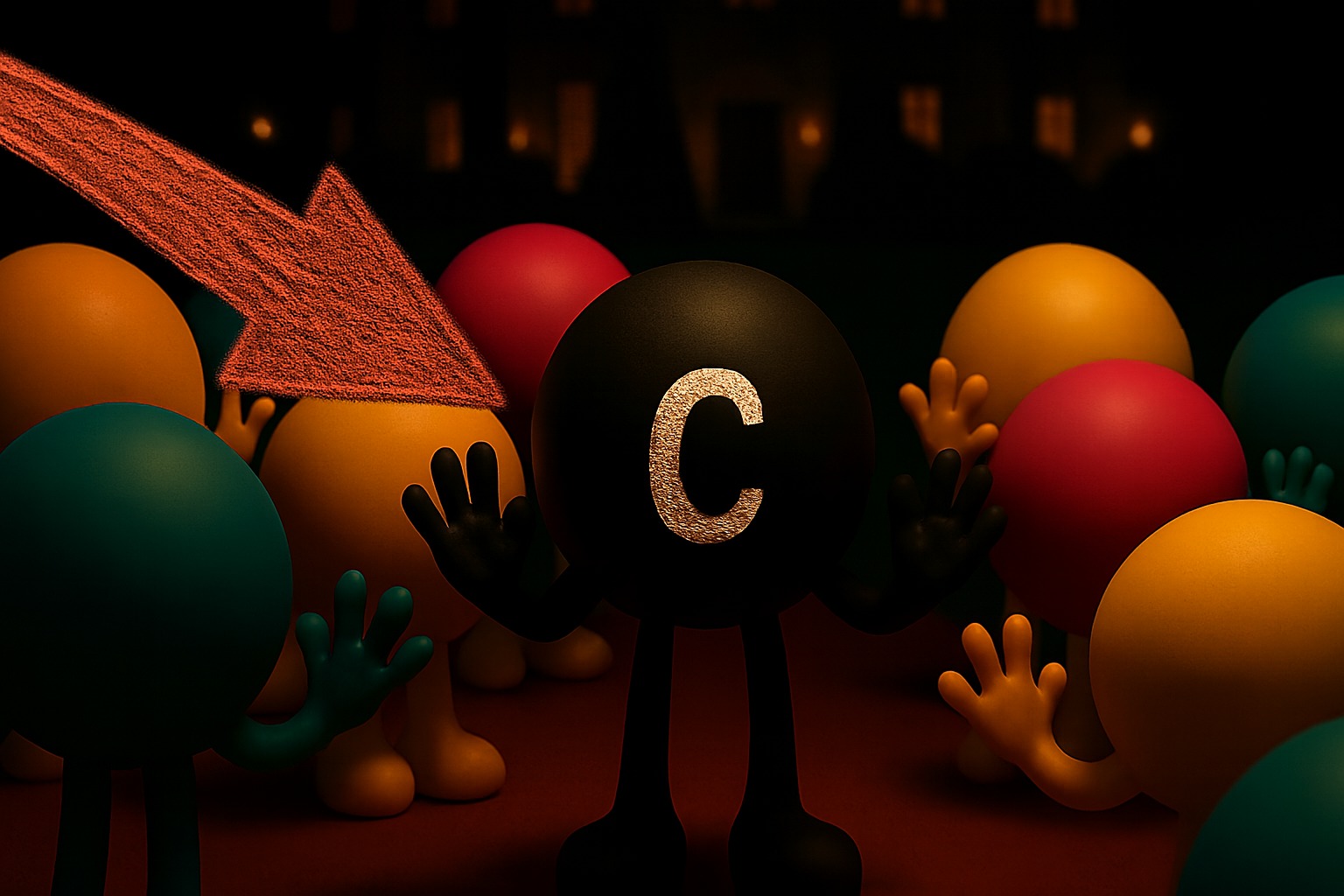There’s a party going on. Like every good party, there’s a corner that’s busier than the rest — where the music hums louder, the lights glint just a little brighter, and the crowd seems to orbit something magnetic. In the new video produced by CVMR Corporation and created by Kiana Kianara (who also serves as a Director at the Critical Minerals Institute), this metaphorical party becomes the world of chemistry and materials science — and at its centre is carbon (C).
In the video, carbon (C) is more than a chemical element: it’s charisma incarnate. Never alone, always at the centre of the room, carbon forms single, double, even triple bonds with other elements — depending entirely on how much it “likes its company.” Carbon flits from friend to friend, weaving relationships with almost anyone it meets. And it’s endlessly adaptable: one minute a humble graphite quietly shading pencils in the background; the next, a dazzling diamond, glorious with unbreakable brilliance.
But carbon isn’t all sparkle and charm. The video explains that when surrounded by the right crowd, carbon gives us life — forming the backbone of organic molecules, materials, infrastructure. With the wrong company, carbon can become dangerous — even deadly. And here the party metaphor snaps into sharper focus: carbon is not just a guest at the party. Carbon is the party.
Next up in the video are the other “guests” — each portrayed as having distinct personalities and roles. Enter nickel (Ni). Nickel isn’t the loudest guest in the room. It doesn’t flash or demand attention. Instead it’s steady, dependable, quietly swirling its electron cocktail, the one everyone relies upon — even if they don’t always notice it. In the CVMR metaphor, nickel is the Superman among the metals — blending into almost every crowd, from the coins in our pockets to the alloys in skyscrapers and jet engines. It’s everywhere, working hard, rarely asking for the spotlight. Without nickel, the party would fall apart.
Then there’s cobalt (Co): bold, expressive, a little dramatic. You can’t ignore cobalt. Famous for its deep blue shade, it turns heads wherever it goes. In its artistic mood, cobalt has given colour to glass, ceramics and pigments for centuries. But beyond beauty, the video reminds us, cobalt is tough and magnetic, essential for powerful batteries, strong alloys and advanced technology. You admire cobalt — but you handle it with care.
And finally, strong, steady, unshakable iron (Fe). The video portrays iron as the backbone of our tools, bridges, railways and skyscrapers. It’s magnetic in a literal sense: it draws others in with a quiet but undeniable pull. Beyond industry, iron plays a deeply personal role — it carries oxygen in our blood, keeps every cell alive. Iron is the strong guest at this party.
So what does this metaphorical party have to do with science education and the critical-minerals sector? Everything. Because through this playful framing, CVMR is doing something vital: making chemistry fun, visual, personable — and most important, accessible. In an era when so many young people look elsewhere for their passions, when the narrative around “critical minerals” sounds dry, obscure or intimidating, this video flips the script. Science becomes social, literally. The elements become characters that invite curiosity rather than fear.
Why does that matter? Because the world is waking up to the importance of critical minerals. The transition to clean energy, the demands of advanced electronics, the reshaping of supply-chains for geopolitics and sustainability — they all hinge upon materials like cobalt (Co), nickel (Ni), carbon-based technologies and, yes, iron (Fe)-based infrastructure. We will not meet these challenges if we cannot attract bright new students — enthusiastic newcomers who see opportunity, not obstacle.
Indeed, this is precisely the point emphasized by Critical Minerals Institute (CMI) Director Peter Clausi, who warns: “Any country that is even considering getting in the critical minerals battle must invest heavily into post-secondary education. We need chemists, we need metallurgists, we need engineers, we need geologists. The plan has to be for 20 years from now, not tomorrow.” This forward-looking call underlines the long-term horizon at stake — and it echoes exactly what the video by CVMR (produced by Kiana Kianara) is trying to do — invite students into the “party” of science now, so they can be leading guests and innovators twenty years down the line.
Too many potential future scientists, engineers and technicians glance at chemistry and say: “Not for me.” The jargon, the complexity, the fear of failure — these erect barriers. What CVMR and Kiana Kianara are doing by injecting story and personality into the periodic table is saying: “Come in. The party’s here. There’s a place for you.” They’re reminding students that chemistry isn’t just equations in a textbook — it’s the foundation of shimmering diamonds and jet engines, giant bridges and the silent hero in your blood.
Of course, we must be honest: even the most charismatic guest can cause trouble if the company is wrong. The real work begins when carbon meets nickel, cobalt or iron in the wrong context — when materials combine in unintended ways or enter unsuitable applications. That drama — the risk, the reward — is real. This isn’t mere chemistry class; it’s the future of technology, infrastructure and society.
If the next generation is going to join this party, we must make the invitation irresistible. We must show them they don’t need to be geniuses — they just need curiosity. That the tables of the periodic table aren’t off-limits — they’re nightly mixers waiting for new guests. So thank you to Kiana Kianara and CVMR for opening the door, turning up the music, and offering a place at the table. Because when one corner of the party is crowded, maybe it’s because everyone smart got the invitation.
Watch the video. Join the crowd. And maybe, just maybe, become the next great guest of the elements.
To see the full video, click here




Leave a Reply